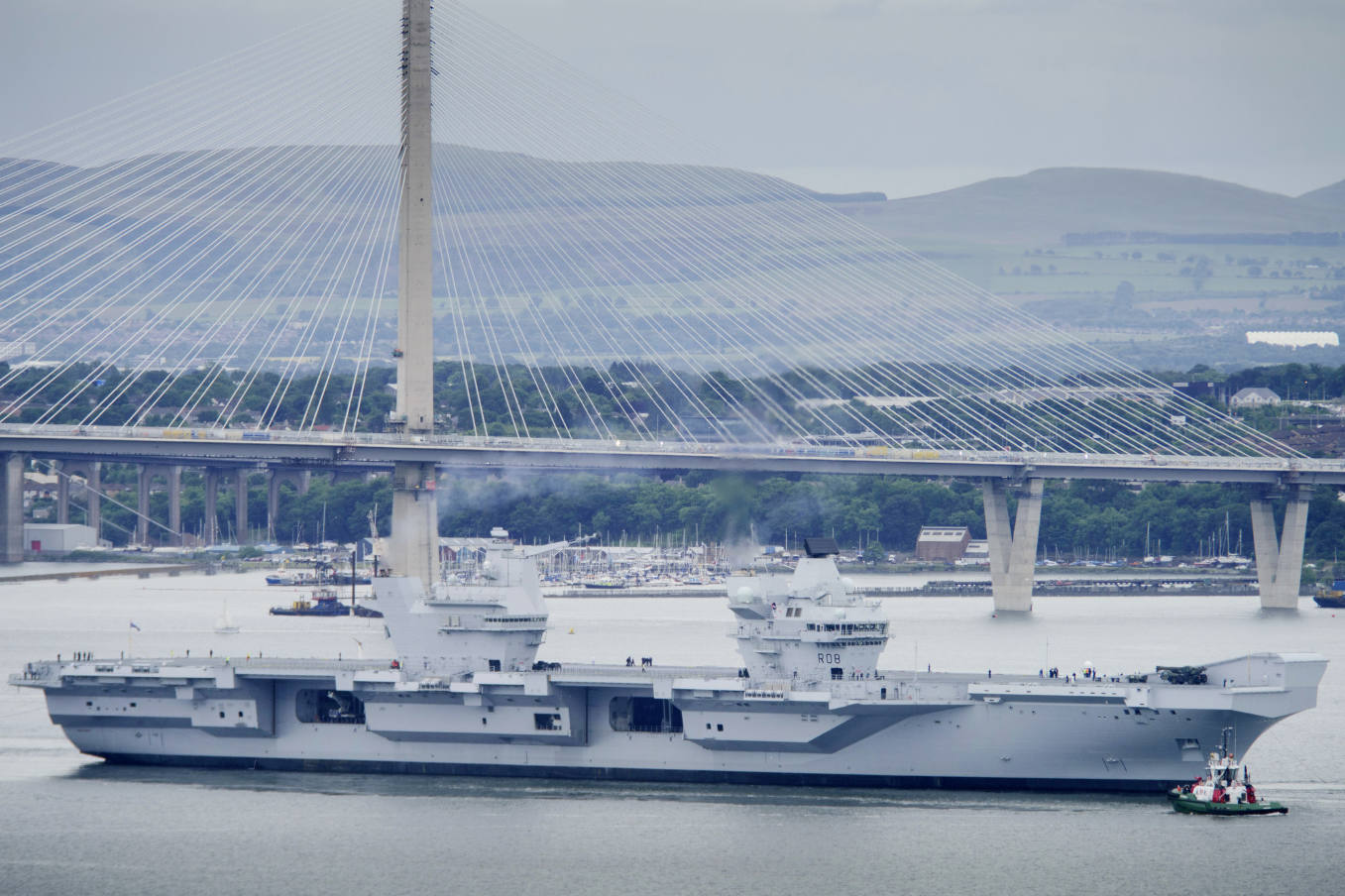HMS Queen Elizabeth, the Royal Navy’s first QE Class aircraft carrier, has set sail from Rosyth, Scotland, to commence first stage sea trials.
Almost 20 years after the design process began, HMS Queen Elizabeth, the Royal Navy’s first QE Class aircraft carrier, has set sail from Rosyth, near Edinburgh, to commence first stage sea trials off the north-east of Scotland. The 65,000t, 280m ship will be the largest aircraft carrier in the world outside the U.S., and the first designed from the outset to operate a fifth-generation aircraft.
Three years after she was officially named by Her Majesty The Queen, the UK’s future flagship will spend an initial period of around six weeks at sea to test the fundamentals of the ship. The sea trials will monitor speed, manoeuvrability, power and propulsion as well as undertaking weapons trials and additional tests on her levels of readiness.
Following this initial period, HMS Queen Elizabeth will return to Rosyth for further testing and maintenance before heading back to sea for a second stage which aims to test her Mission Systems. She will transit to her home port of Portsmouth Naval Base to be handed over to the Royal Navy later this year.
HMS Queen Elizabeth is the largest and most powerful warship ever constructed for the Royal Navy. The ship will operate with a crew of approximately 700, increasing to 1,600 when a full complement of 36 F-35B aircraft and four Crowsnest helicopters are embarked. Alternatively, they can also carry up to 12 Chinook or Merlin helicopters, and eight Apache attack helicopters enabling the QE Class to support a broad range of operations, from power projection to amphibious assault.
In a mixed configuration, the carriers could carry 24 F-35Bs, 5 Merlin Mk2 Crowsnest airborne surveillance and control helicopters, 9 Merlin Mk2s and 3 Merlin Mk4s. The Merlins are equipped for surface warfare, anti-submarine warfare or rescue missions.
The Ship’s Company moved on board earlier this month. Working alongside industry colleagues, they have been familiarising themselves with the new ship and the high-tech systems on board as well as undergoing training.
HMS Queen Elizabeth’s sister ship, HMS Prince of Wales, is structurally complete and is currently in the outfitting phase of her programme. The two aircraft carriers are being delivered by the Aircraft Carrier Alliance, a partnership between BAE Systems, Thales UK, Babcock and the Ministry of Defence.
The Class will be the centrepiece of Britain’s maritime capability. Each aircraft carrier, coupled with the F-35B Lightning aircraft, will form an integral part of the UK’s Carrier Strike capability.
The full carrier battle group is scheduled to be fully operational by 2023. The Royal Air Force and Royal Navy plan to operate 138 F-35B short takeoff/vertical landing aircraft. The U.K. is currently negotiating the deployment of a detachment of U.S. Marine Corps F-35Bs on the Queen Elizabeth in 2021.

